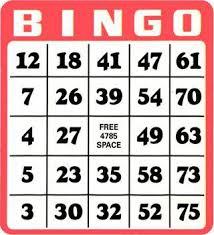
Organizations that create objectives based on their needs and timelines and not their buyers miss key indicators and create frustration for their internal and external customers. Why do so many organizations create goals and key performance indicators from high within their organizations and not from the market and buyers in market?
Most organizations lack an intimate knowledge of their buyers, their problems, and buying process so they operate in “gut and intuition mode.”
When organizations start building market driven goals with an understanding of the problems their products and services solve, key indicators and EBITDA objectives are met and exceeded.
If you have not gathered it from previous posts, I fly a great deal. Domestic travel has become more of a necessary evil experience (with the exception of South West). I have traveled on business now for over 25 years, so I remember when air travel felt like the airlines valued me and my business.
International travel has become even more challenging. I traveled from Phoenix to Manchester England recently on Delta. I had a long layover in Atlanta and then 7 1/2 hour flight over the pond and I was in business. The first leg of my flight left Phoenix at 6:10 AM. so based on the rules for international travel I had to check in at the airport by 4:00 AM. Luckily I do not live too far from the airport so I set my alarm at 2:45 AM. I arrived, parked the car, took the parking bus to the terminal, went through security and arrived at my departure gate.
I settled in with a book I have wanted to read by Jim Collins and I was not looking forward to my 5 hour layover in Atlanta,… but you have to do what you have to do.
The gate agent announced;
We are overbooked on this flight and we are looking for 4 volunteers willing to take the later flight and we will give a voucher to be used for future travel…
I went up to the check in counter, and found I could indeed take the later flight and still have a hour to make my connection in Atlanta. However, since I was already at the airport, I decided to decline.
In about 15 minutes another announcement needing volunteers and her voice seemed more desperate. ( don’t customers know how important it is to Delta to get volenteers now?)
As the boarding time approached we heard additional announcements and eventually they found their volunteers who had “flexible” flight plans and they received later flights and cash vouchers. ( while our take off was delayed)
Hey Delta…when did your system know you were oversold?
Is this the ideal buyer experience for your service? …I think not.
If your system knew within 24 hours of the flight it was over sold, it sounds like you have an unresolved problem you need to solve that may actually turn into a service your customers rave about and save your bottom-line profits…Interested?
If you have the technology to remind me to check in 24 hours prior to the flight, …can you leverage that technology to request volunteers for overbooked flights 24 ours ahead of check in? If so I would have volunteered for free to have a few more hours of shut eye!
How about your organization?
Do you set sales goals and timelines based on your needs versus the markets? How’s that working for you?
Are your sales objectives and timelines created by internal Hippos who have a dated understanding of your market?
Or are your goals developed with a clear understanding of your buyers, their buying process and criteria?
Let me ask you a key question….
What % of your sales team met or exceeded their sales goals last year? If you are like most organizations as high as 70% of your team missed their sales objectives last year.
While on this topic let me ask you another question:
What % of your salespeople received a goal increase this year?…( that many huh?)
So let me get this straight, 70% of your team missed their sales objectives in 2009, and 100% received a goal increase in 2010? Am I the only one who has heard Einstein’s definition of insanity? [Hell, chances are you have used it in meetings with your team, why not look in the mirror when setting goals?] So your employees also suffer whn goals are made wiout an understanding of your buyers?
So what happens next?
Objectives are missed
Goals are adjusted down or inventory far exceeds actual sales, and EBITDA objectives are missed…again
And / or you discount your product or service so buyers react to your goals and timelines
Market leaders understand goals should not be a shell game, and they must be created from a clear understanding of your markets and how (when) your buyers buy.
Market losers create objectives in their Hippo watering holes called boardrooms with little or no understanding of their buyers, buying timelines, and buying process.They focus on their needs and not those of their buyers. They demand buyers to buy on thier timeline.
Market Losers get frustrated because objectives and key timelines are being missed, and they try to “manage” their way to bottom-line objectives.
What kind of company do you work for?
What kind of a leader are you?
If you are a Hippo, when is the last time you left “the watering hole”?
When was the last time you bought or used your product or service?
When was the last time you talked to a potential buyer for your product?
Are you dictating when buyers must buy?
The solution is obvious….
Get out in your market and get to know your customers and potential customers today. When you do you will discover market problems and see opportunities for your team to solve those problems.
Who knows, you may also create raving fans who value a few extra hours a shut eye more than a $400 travel voucher.





